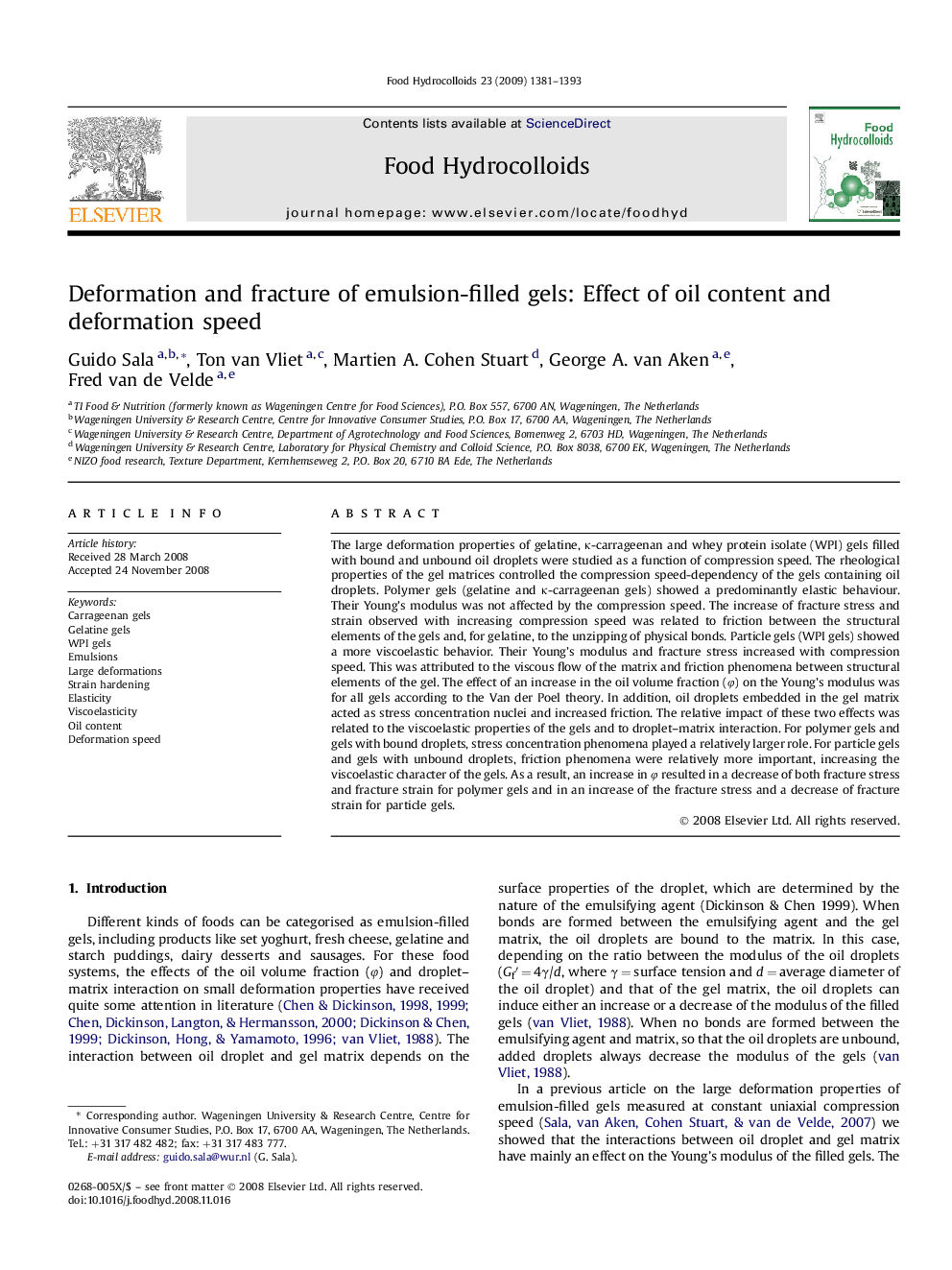| کد مقاله | کد نشریه | سال انتشار | مقاله انگلیسی | نسخه تمام متن |
|---|---|---|---|---|
| 605877 | 880367 | 2009 | 13 صفحه PDF | دانلود رایگان |

The large deformation properties of gelatine, κ-carrageenan and whey protein isolate (WPI) gels filled with bound and unbound oil droplets were studied as a function of compression speed. The rheological properties of the gel matrices controlled the compression speed-dependency of the gels containing oil droplets. Polymer gels (gelatine and κ-carrageenan gels) showed a predominantly elastic behaviour. Their Young's modulus was not affected by the compression speed. The increase of fracture stress and strain observed with increasing compression speed was related to friction between the structural elements of the gels and, for gelatine, to the unzipping of physical bonds. Particle gels (WPI gels) showed a more viscoelastic behavior. Their Young's modulus and fracture stress increased with compression speed. This was attributed to the viscous flow of the matrix and friction phenomena between structural elements of the gel. The effect of an increase in the oil volume fraction (φ) on the Young's modulus was for all gels according to the Van der Poel theory. In addition, oil droplets embedded in the gel matrix acted as stress concentration nuclei and increased friction. The relative impact of these two effects was related to the viscoelastic properties of the gels and to droplet–matrix interaction. For polymer gels and gels with bound droplets, stress concentration phenomena played a relatively larger role. For particle gels and gels with unbound droplets, friction phenomena were relatively more important, increasing the viscoelastic character of the gels. As a result, an increase in φ resulted in a decrease of both fracture stress and fracture strain for polymer gels and in an increase of the fracture stress and a decrease of fracture strain for particle gels.
Journal: Food Hydrocolloids - Volume 23, Issue 5, July 2009, Pages 1381–1393